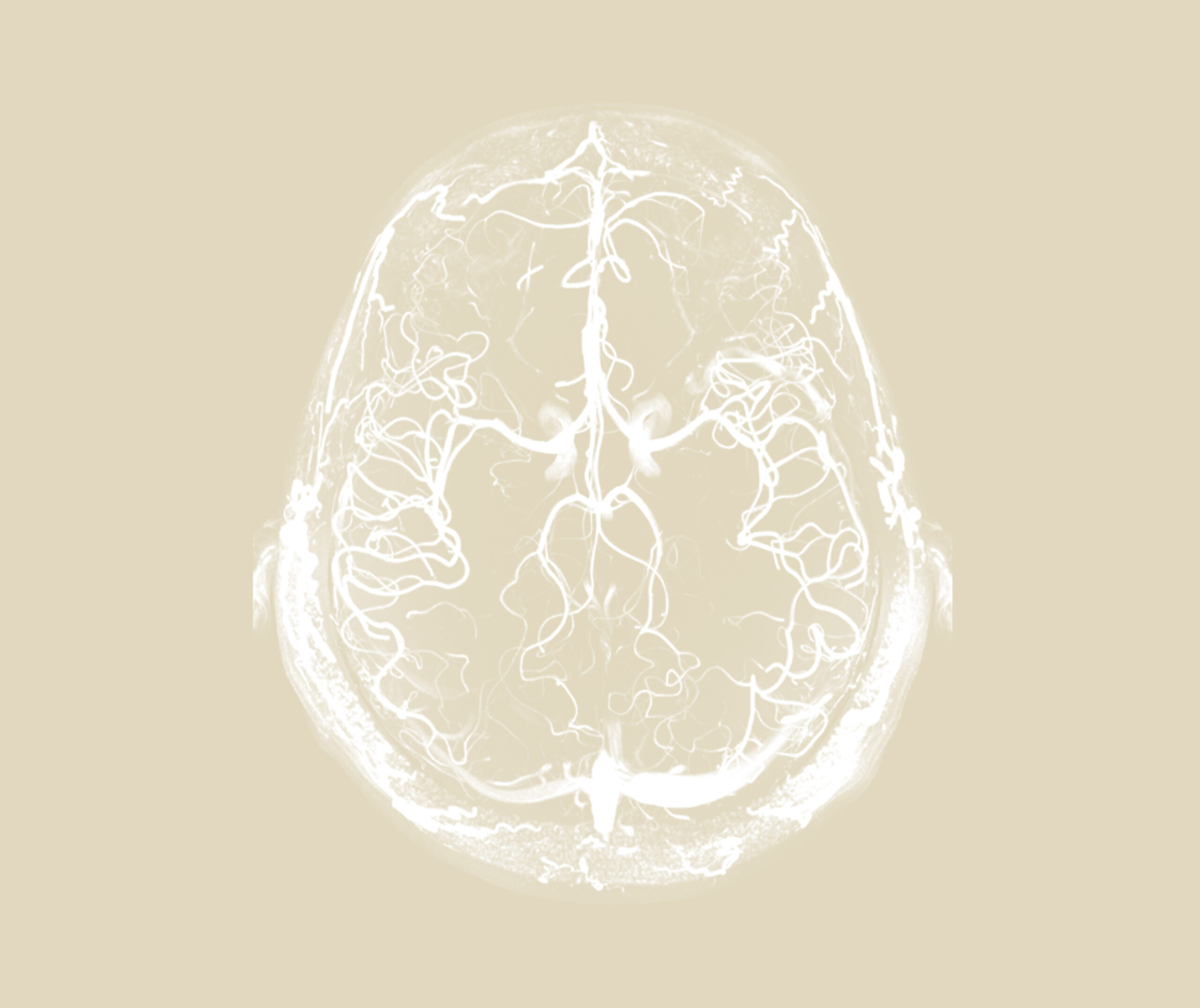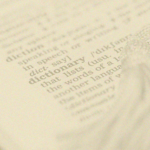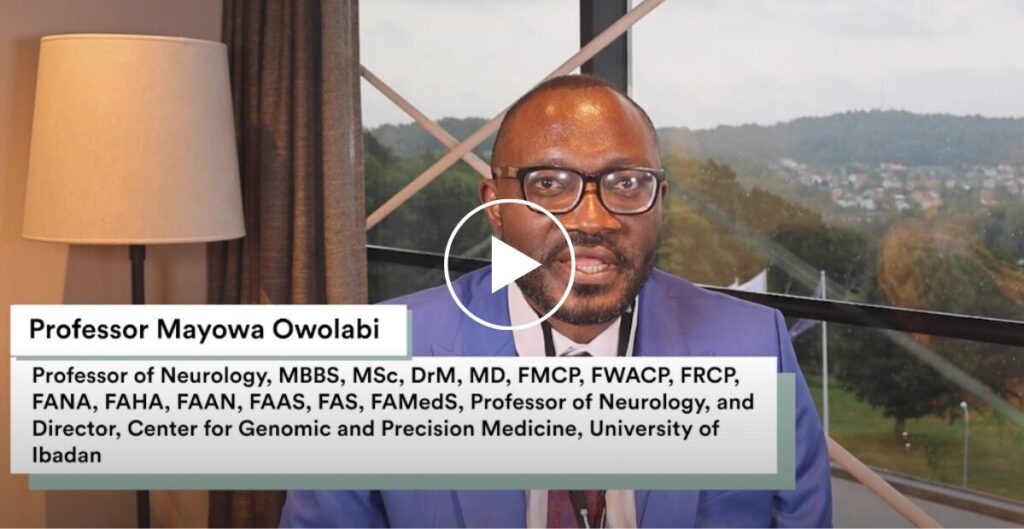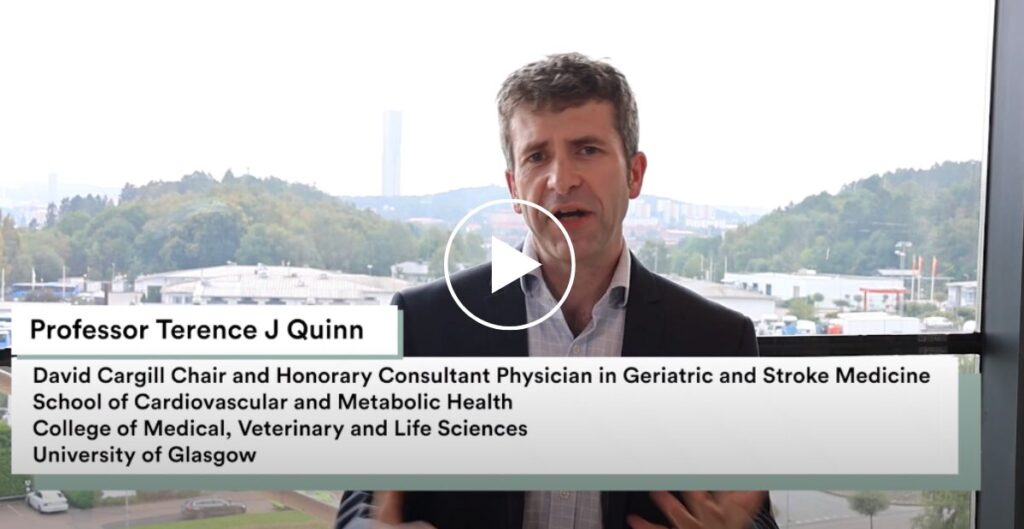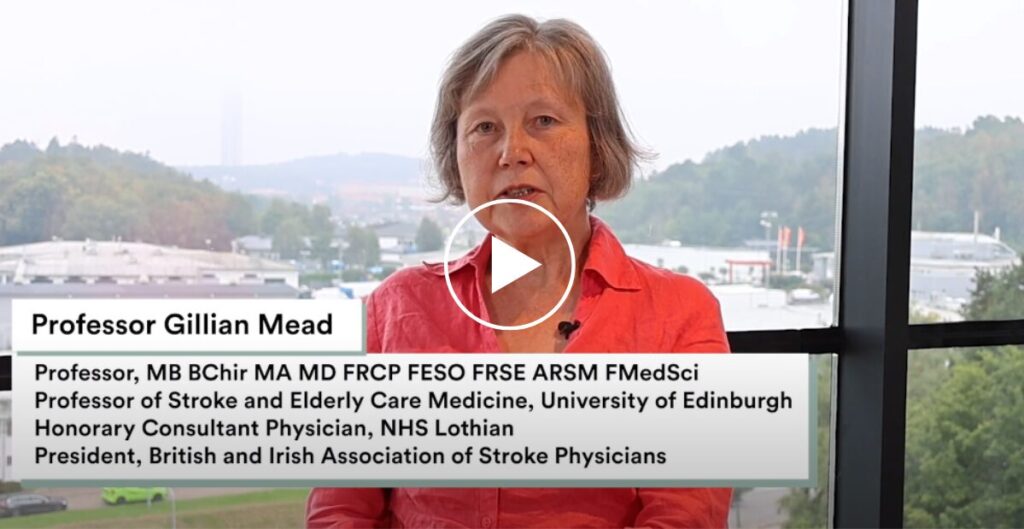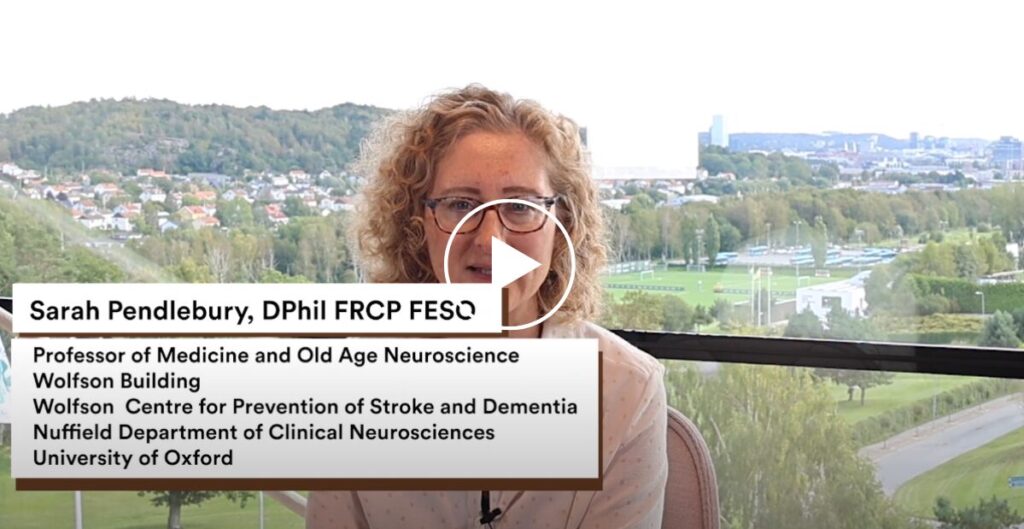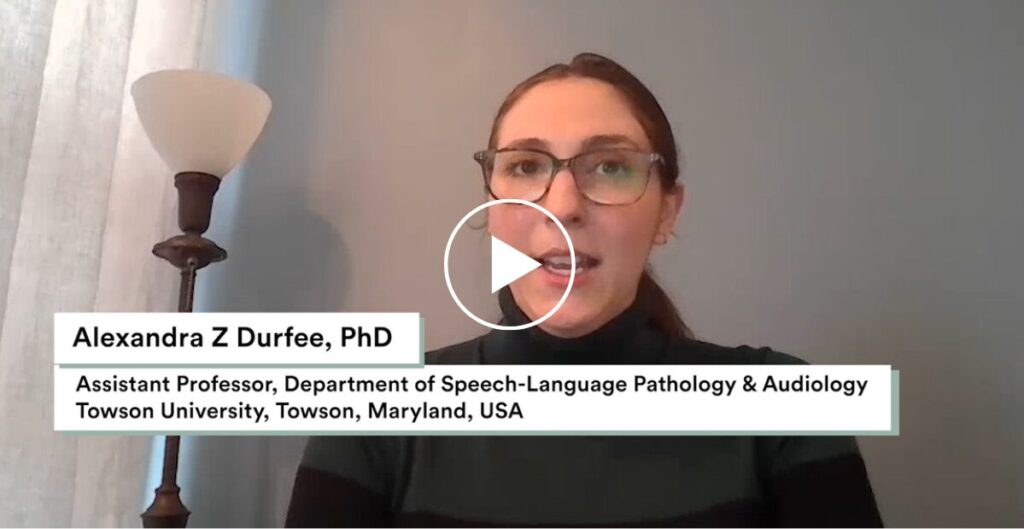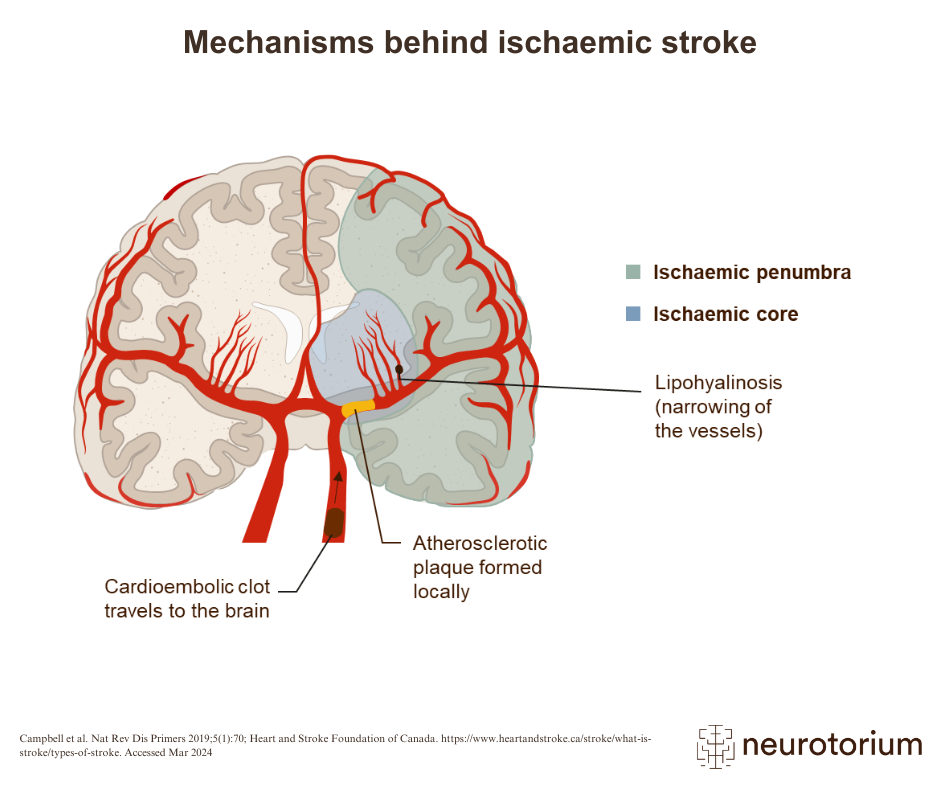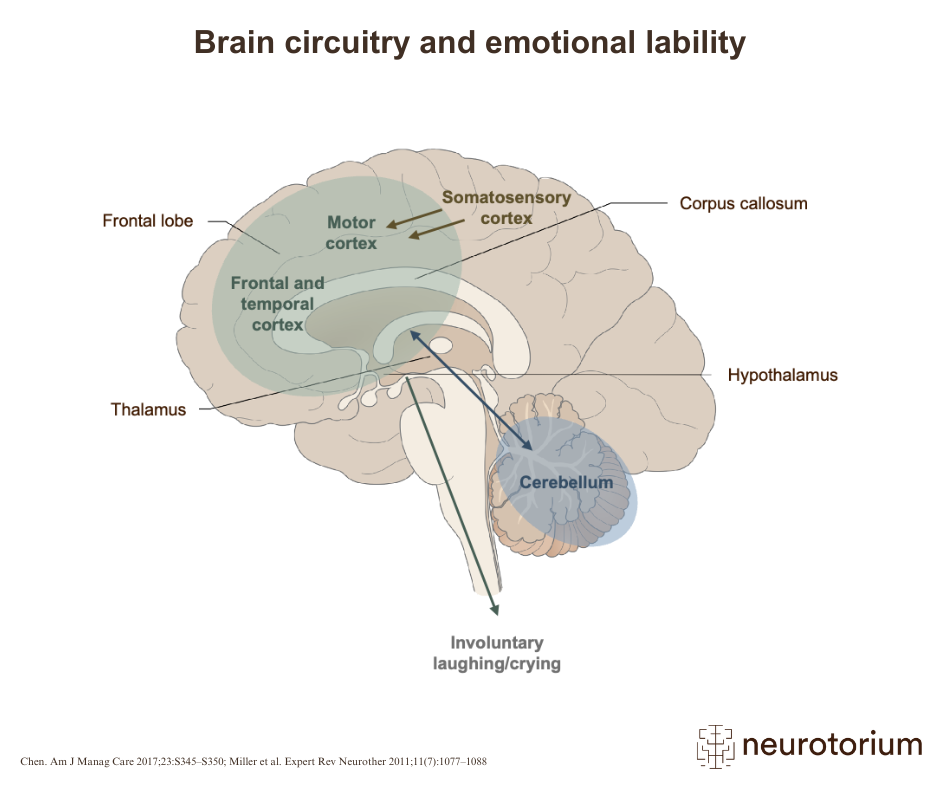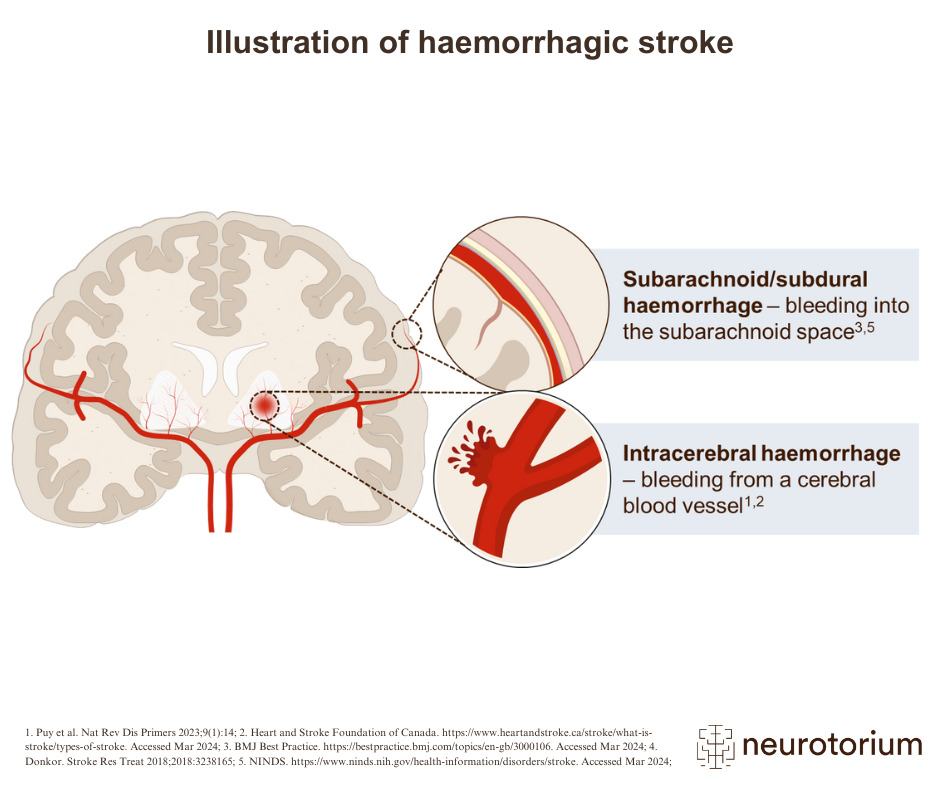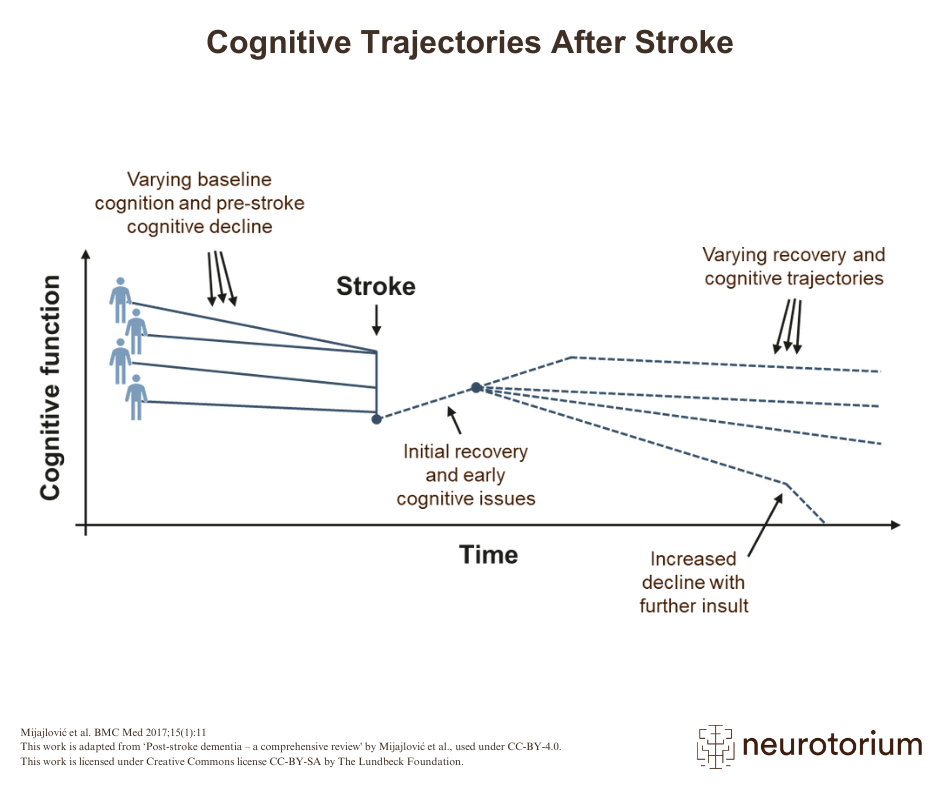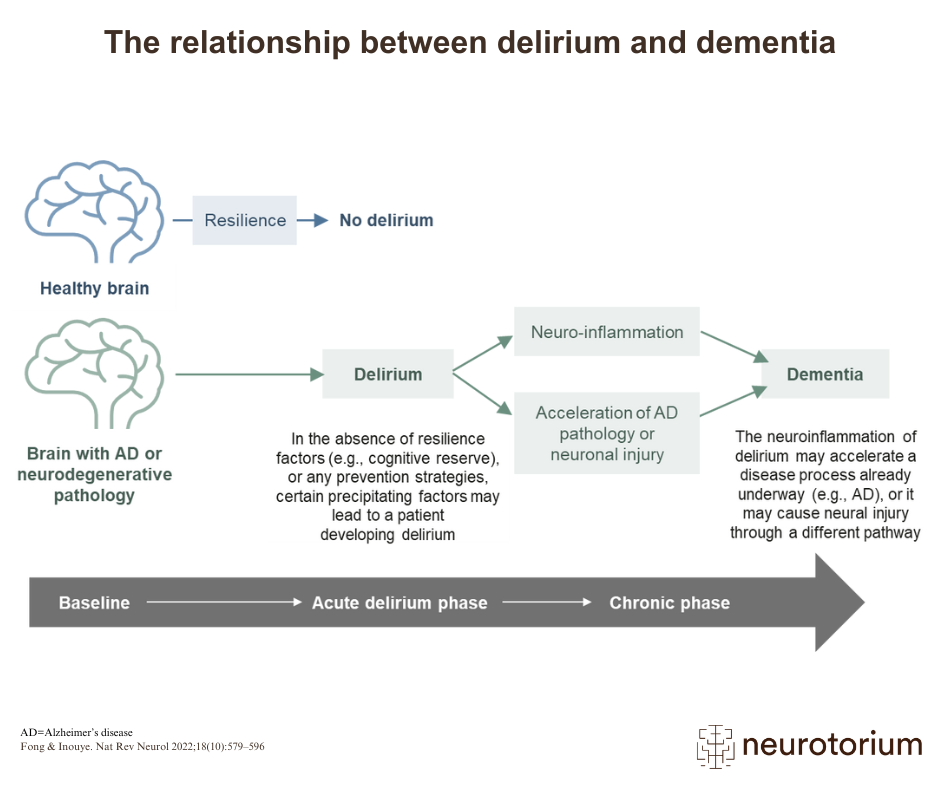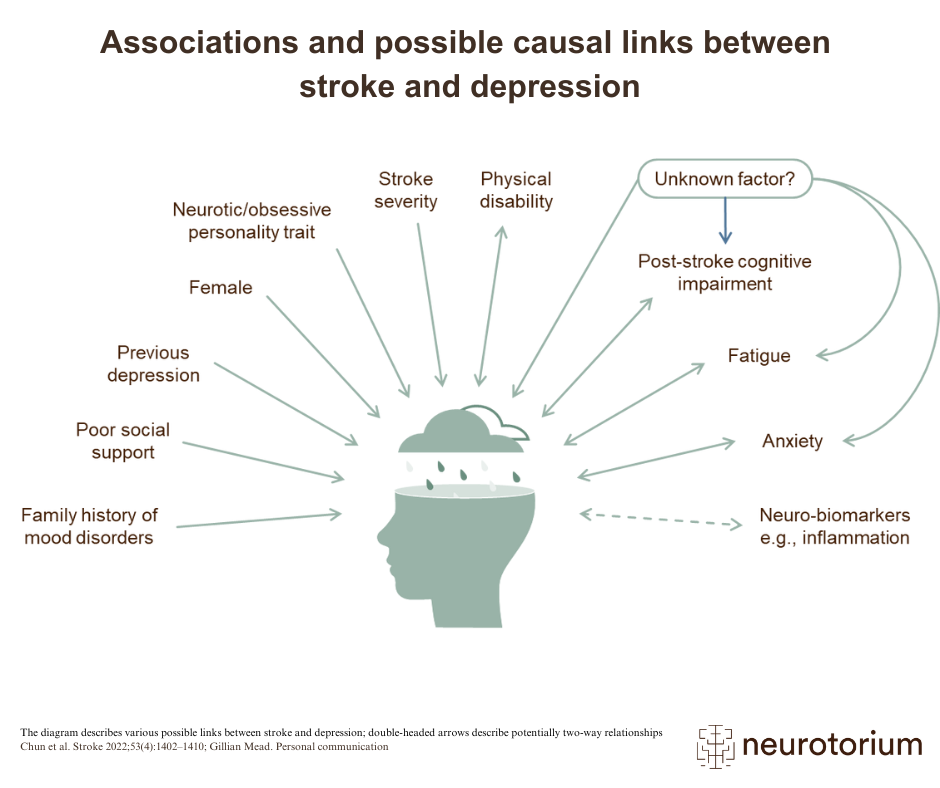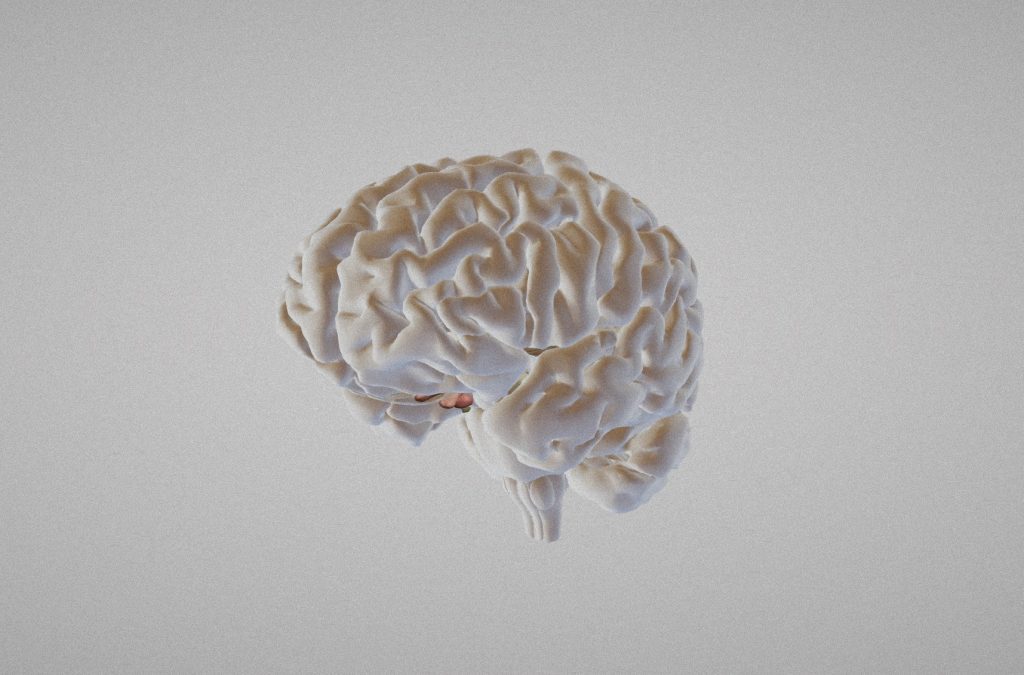Slide Decks on NBCS
Our educational slide decks on the Neurobehavioral Consequences of Stroke (NBCS) offer an overview of stroke and provide an introduction to current knowledge on NBCS including delirium, post-stroke neuropsychiatric symptoms (NPS), and post-stroke cognitive impairment.
Scroll down to discover our slide decks and subscribe to our newsletter for updates on this and other state-of-the-art educational materials in the field of neurology and psychiatry.
Our slide decks are free to download and use in your presentations.
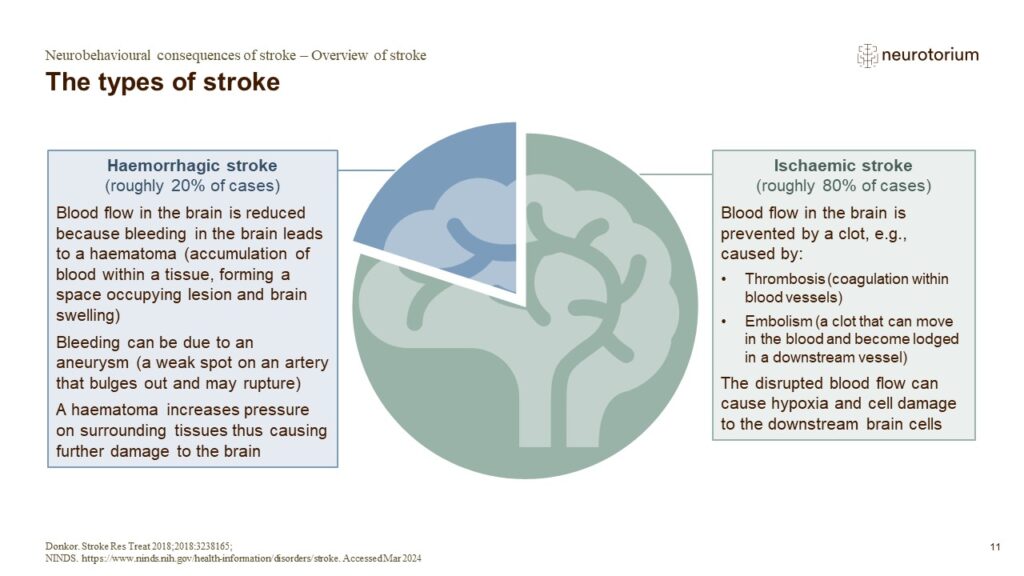
Overview of Stroke
This slide deck presents an overview of stroke, including facts on stroke types and risk factors, as well as solutions to reduce the global stroke burden. Go to the slide deck.
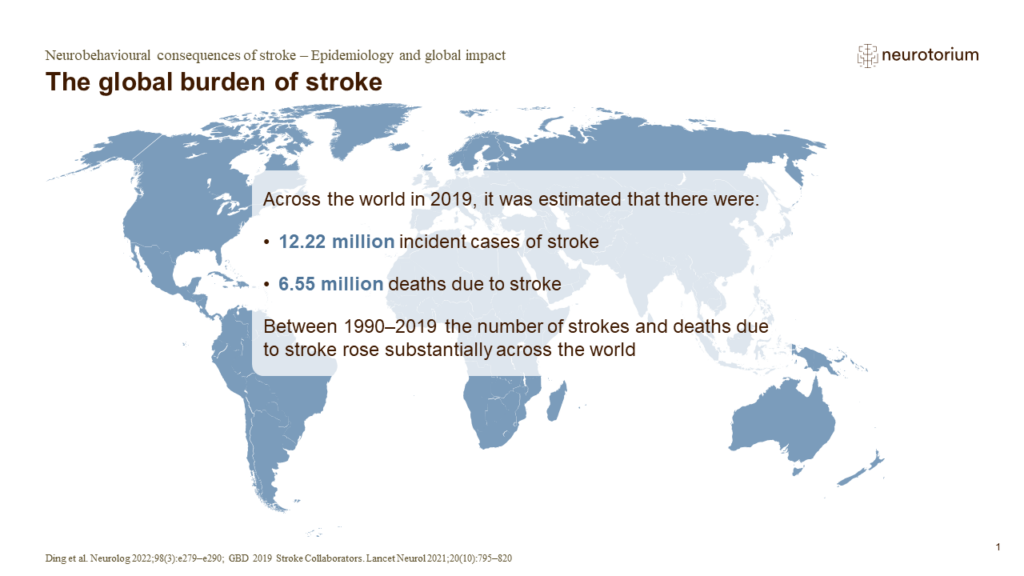
Epidemiology and Global Impact of Stroke and NBCS
This slide deck discusses the epidemiology and burden of stroke and the epidemiology and impact of neurobehavioral consequences of stroke. Go to the slide deck.
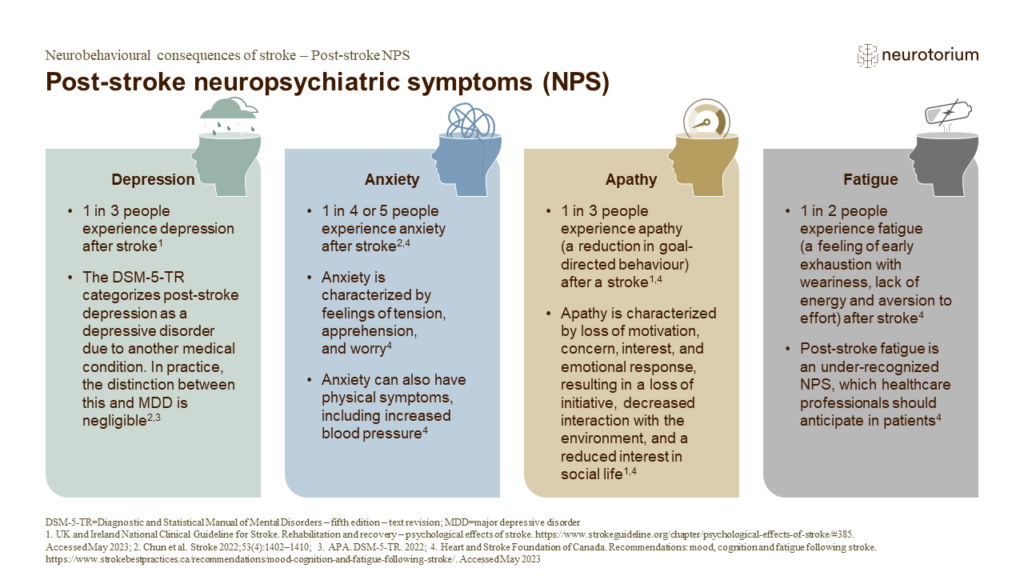
Post-stroke Neuropsychiatric Symptoms
This slide deck provides definitions of NPS, including the challenges associated with diagnosis, epidemiology, unmet needs, and management strategies for post-stroke NPS. Go to the slide deck.
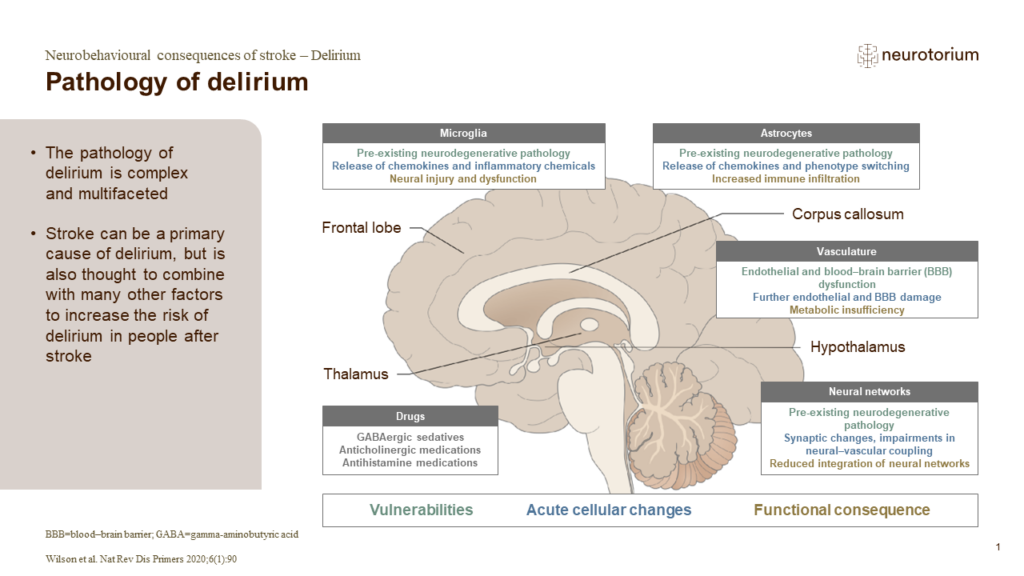
Post-stroke Delirium
This slide deck presents current knowledge about delirium in relation to stroke, covering topics such as risk factors for post-stroke delirium, diagnosis, and treatment. Go to the slide deck.
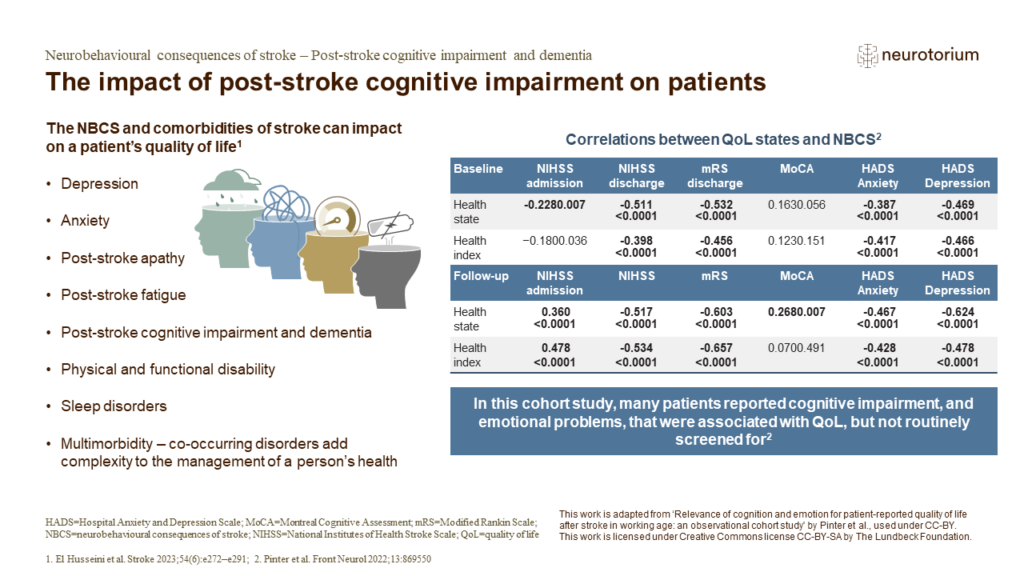
Post-stroke Cognitive Impairment and Dementia
This slide deck provides insight into the epidemiology, pathology, and clinical management of post-stroke cognitive impairment and dementia. Go to the slide deck.
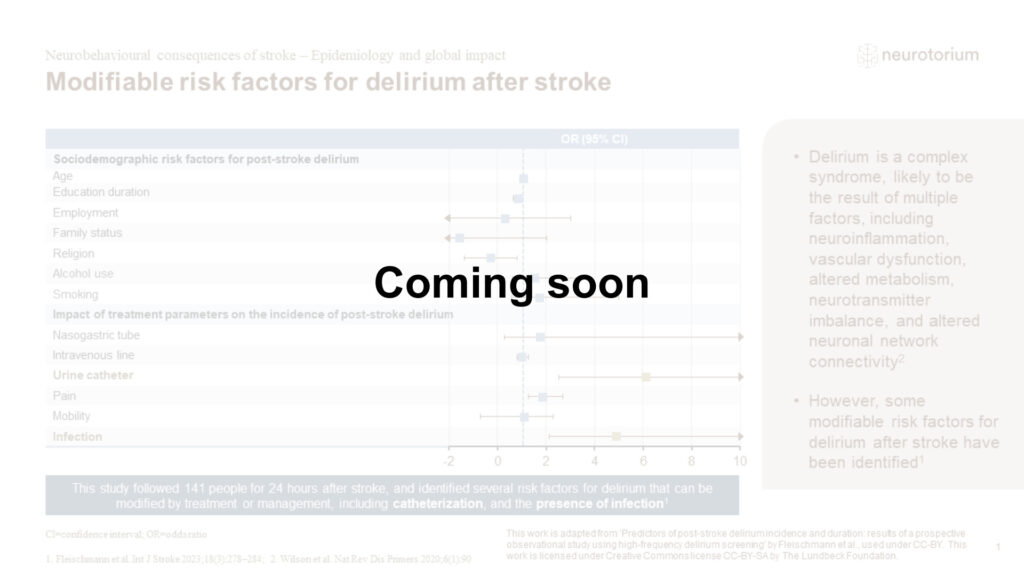
Stroke Syndromes
Coming soon
Articles on NBCS
Patients with stroke can experience a high level of disability – similar to that experienced by patients with severe dementia, and patients following heart attack. We currently have the following articles on NBCS, and with ongoing updates we expect to cover additional relevant issues within the realm of stroke.
- Post-stroke Language ImpairmentsThis article reviews leading psycholinguistic theories of language processing, their proposed neuroanatomical correlates, and language impairment patterns commonly observed following left hemisphere and right hemisphere strokes.
Watch The Videos on NBCS
Access our series of videos where we explain complex topics, discuss current issues, and illustrate key concepts related to stroke and post-stroke challenges. Dive into understanding delirium after stroke and its impact on health outcomes. Additionally, learn about Professor Mayowa Owolabi’s comprehensive approach, the ‘Stroke Quadrangle’, tackling the burden of stroke with improved surveillance, prevention measures, acute care services, and rehabilitation.
The Global Burden of Stroke
Professor Mayowa Owolabi introduces the ‘Stroke Quadrangle’ as a comprehensive approach to tackle issues related to the global burden of stroke.
Post-stroke Anxiety and Depression
Dr. Akin Ojagbemi highlights that both post-stroke depression and post-stroke anxiety are highly treatable, as they respond well to antidepressants and psychosocial interventions.
Post-stroke Delirium
In this video, Professor Terry Quinn discusses why it is important to identify delirium after a stroke and how it affects health outcomes.
Post-stroke Neuropsychiatric Symptoms
Listen as Professor Gillian Mead discusses the neuropsychiatric symptoms commonly experienced after a stroke.
Post-stroke Cognitive Impairment
In this video, Professor Sarah Pendlebury discusses the often overlooked post-stroke cognitive impairment, emphasizing its association with dementia and the common misconceptions about its impact.
Post-stroke Language Impairments
In this video, Alexandra Z Durfee, Ph.D., discusses aphasia, a language disorder often resulting from left-hemisphere strokes, causing challenges with speaking, listening, reading, and writing.
Download Illustrations & Figures on NBCS
Stroke increases the risk of neuropsychiatric symptoms (NPS), however, determining the links between stroke and NPS is complex because they are thought to share common underlying risks. Download and use images illustrating various aspects of stroke and post-stroke. Selected images provide insights into the types of stokes, post-stroke NPS, and other neurobehavioral consequences of stroke.
3D Brain Atlas
The pathology of stroke can affect many areas of the brain, damage to an area involved in emotional regulation may lead to dysfunction
- Emotional lability, pseudobulbar affect (PBA), emotionalism, or pathological crying and laughing all describe episodes of involuntary and uncontrollable crying and/or laughing, outside of socially appropriate circumstances and when it is incongruent with the patient’s emotional state
- The dominant current theories propose that PBA arises from interruptions in neural pathways responsible for regulating emotional responses in the brain, specifically the descending pathways from regions like the frontal lobes to the cerebellum via the basis pontis.


